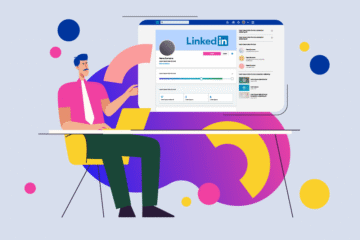meta description: Your CRM WhatsApp integration could be killing sales. Learn the fatal errors most businesses make and build a system that turns chats into revenue.
Imagine your latest ad campaign is a huge success. Leads are flooding your WhatsApp, but your team is drowning. A message from a high-value client gets buried, and by the time you reply, they’ve already signed with a competitor.
Of course anyone would call it a missed sale, but actually it represents more: a symptom of a broken process that’s draining money and morale from your business.
Many businesses turn to a CRM WhatsApp integration to fix this. When done right, it transforms disorganized chats into profitable customer relationships. It creates a single place where every conversation is tracked and every lead is nurtured.
But getting it right can be tricky. This guide moves to cover the mistakes that can turn a powerful tool into a costly headache. Let’s make sure you build a system that actually grows your business.
The setup traps: don’t build on a shaky foundation
The most dangerous mistakes happen before a single message is sent. If the initial strategy is flawed, everything you build on top of it will be unstable.
Choosing the “easy” route with unofficial tools
When exploring a CRM WhatsApp integration, you’ll find plenty of third-party tools promising a quick and cheap connection. They seem like a smart shortcut to avoid the official WhatsApp Business Platform.
This is definitely a guarantee of future problems. Sooner or later, WhatsApp’s systems will find and permanently ban your number for violating their terms of service, wich means in an instant, you can lose your primary customer communication channel, your entire conversation history, and the trust you’ve worked hard to build. It’s like having your main business phone line disconnected without warning. Fortunately, we’re warning about it before, and not after it happens to you.
Using the official API is an investment in your business’s stability. It provides the security and scalability you need to grow and is the only way to get professional features like the green checkmark, which tells customers you’re a legitimate business.
Thinking of it as a tech task, not a sales strategy
A common pitfall is handing the project to the IT department with a simple directive: “make these two things talk to each other.” A box gets checked, and management moves on. This treats the integration as a simple technical task, not the strategic business decision it truly is.
The result couldn’t be any other: the tech team connects the pipes, but no water flows. The sales team ignores the new setup because it doesn’t help them sell. If the tool doesn’t fit their daily workflow, it becomes just another piece of clunky software they have to use. You’ve paid for a connection but created zero business value.
Hence your strategy must define your communication rules. How should your team engage new leads versus existing customers? While one-on-one chats are a strength, you might also need to send updates to larger groups. However, sending a broadcast message in whatsapp demands a completely different approach than an email campaign to avoid alienating your audience.
Before connecting anything, map out your ideal customer conversation. Ask practical questions: “How should a new lead feel when they message us?” or “What information does our salesperson need for a great first conversation?” Design the human process first, then use technology to make it efficient.
The daily-use blunders: don’t annoy your future customers
Once the integration is live, a new set of challenges emerges. How you use the tool daily determines if it builds relationships or alienates your audience.
Treating WhatsApp like your new email blaster
With automation and direct access to customers’ phones, the temptation to send marketing blasts is strong. Many businesses start treating WhatsApp like another channel for mass marketing, another big mistake.
This is a fundamental misunderstanding of the platform. WhatsApp is a personal space, usually reserved for friends and family. When a business barges in shouting sales pitches, the reaction is swift and negative.
People will block you. This activity signals to Meta that your messages are spam, which damages your number’s reputation and can lead to messaging restrictions, even on the official platform.
Use automation to be helpful, not to broadcast. Set up a friendly welcome message that sets expectations: “Thanks for reaching out! A real person from our team will be with you in the next 5 minutes.” Use the data in your CRM to make every interaction relevant. A simple, “Hi [Name], I saw you were looking at our [Product Page]. Any questions I can help with?” is far more effective than a generic blast.
Running on “good vibes” instead of good data
It’s easy to manage by perception. The team is busy chatting, and it feels productive. You see a lot of activity and assume the integration is working, without ever defining what success actually looks like.
When you operate this way, you can’t answer the most important question: “Is this making us money?” You don’t know how long it takes to respond to a new lead, which campaigns are driving valuable conversations, or how many chats turn into deals. Without this insight, you can’t improve your process or justify the investment.
Decide what you want to measure from day one. Focus on metrics that matter to the business. Track your Lead Response Time, your Conversation-to-Deal Rate, and, most importantly, the Channel-Sourced Revenue. This data shifts the conversation from “we seem busy” to “we are profitable.”
From chaotic chats to predictable profit
Success with a CRM WhatsApp integration comes down to two things: setting it up thoughtfully and using it respectfully. It requires a solid foundation and a constant awareness that you’re communicating with people on a personal channel.
This project is about more than linking two pieces of software. It’s about designing a modern, efficient way for customers to do business with you.
Get that right, and the technology will pay for itself many times over. It will turn a source of chaos into a predictable engine for revenue and customer delight.
Keep an eye for more latest news & updates on Tribune!



